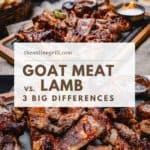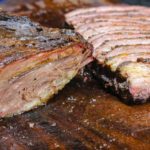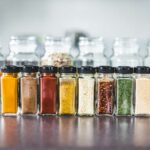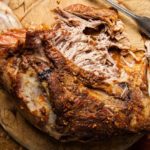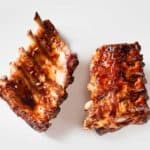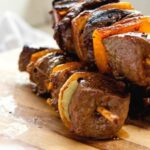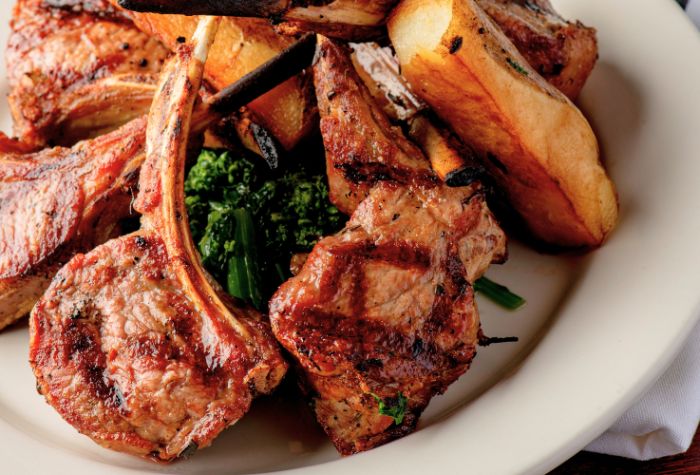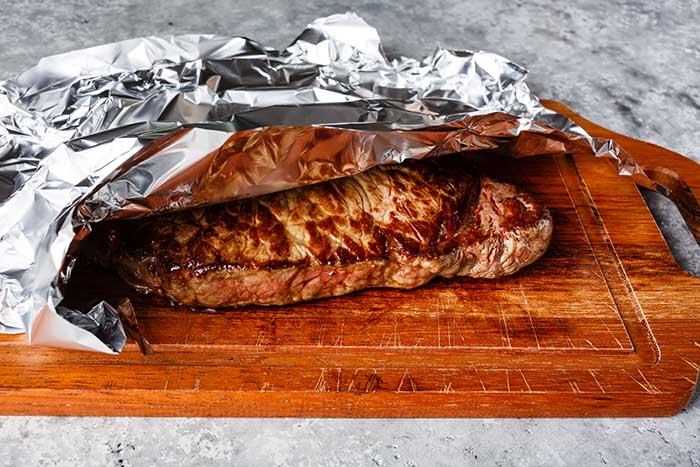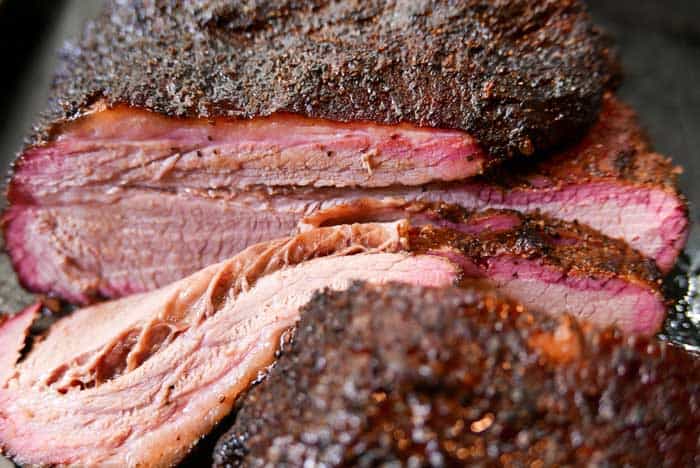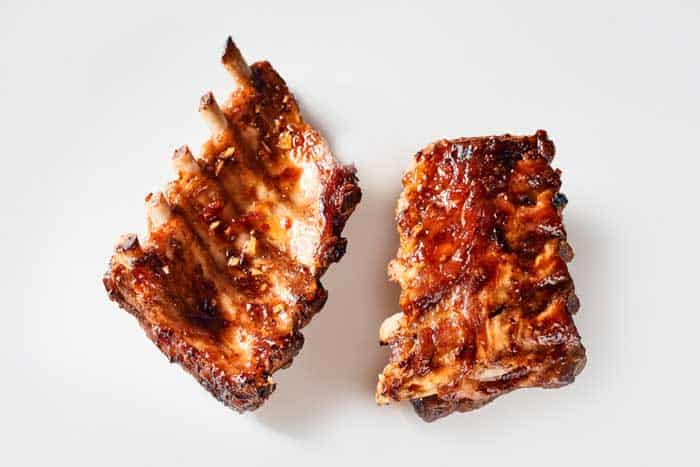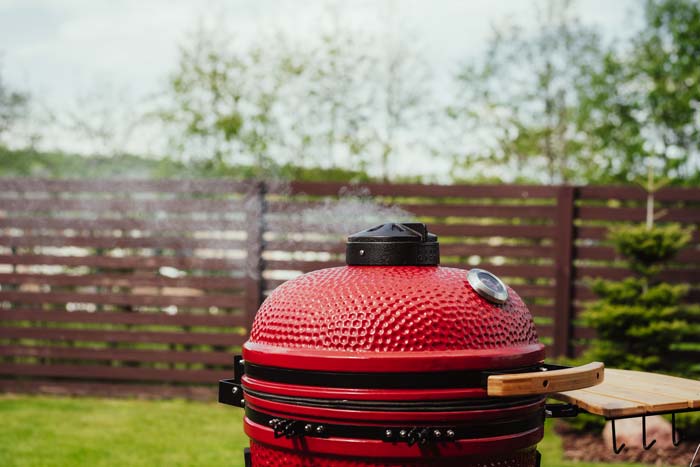Goat meat has been surging in popularity over the past few years, with some calling it a healthier alternative to lamb. But the meat isn’t a like-for-like alternative. In today’s article we’re going to show you the main differences between goat and lamb meat, how to cook them, and when to use each one.
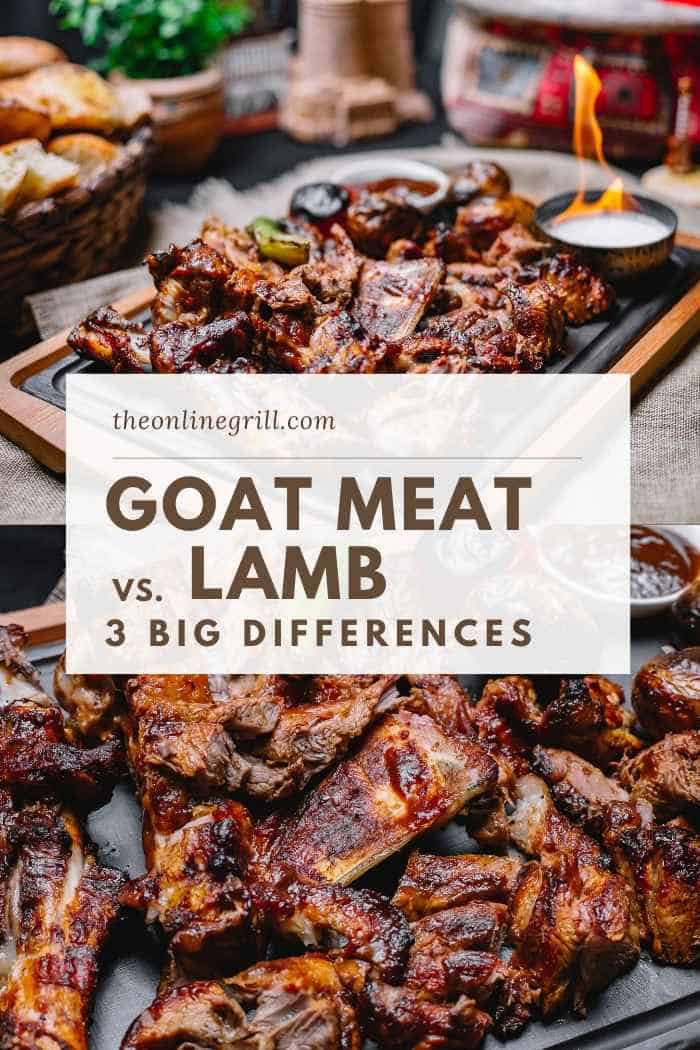
Goat vs. Lamb Differences
Goat meat has lower fat content than lamb, averaging around 3%. This contributes to goat meat’s slightly tougher texture, yet it also enhances its suitability for slow-cooking methods such as braising, roasting, or smoking. Despite the toughness, goat meat is often favored for its higher protein and healthier calorie content. Therefore, for those seeking a healthier, leaner, and nutritionally superior alternative, goat meat stands out as an excellent choice over lamb.
Here are the three main differences between goat and lamb that make the two very different types of meat altogether.
Nutritional value
Goat meat is widely considered to be healthier than lamb. In comparison to sheep meat, goat is lower in cholesterol, saturated fats, and calories.
In fact, it’s lower in cholesterol than other meats, such as beef, pork, and even chicken.
Yep, even chicken.
The nutritional content of goat doesn’t end there though. It’s also incredibly high in protein, and even contains more iron than beef.
All in all, this makes goat a leaner cut of meat than lamb.
| per 100g | Goat | Lamb |
|---|---|---|
| Total Fat | 3 g | 21 g |
| Protein | 27 g | 25 g |
| Calories | 143 | 294 |
| Cholesterol | 75 mg | 97 mg |
| Iron | 3.7 mg | 1.9 mg |
Marbling
Most cuts of lamb meat contain more fat than goat. This is made evident by the visible amount of marbling that you can see across the surface of lamb.
Marbling is the white marks and flecks of fat that you see appear along the surface of red meat. They’re mostly found in the muscles of beef, lamb and goat and are also referred to as intramuscular fat.
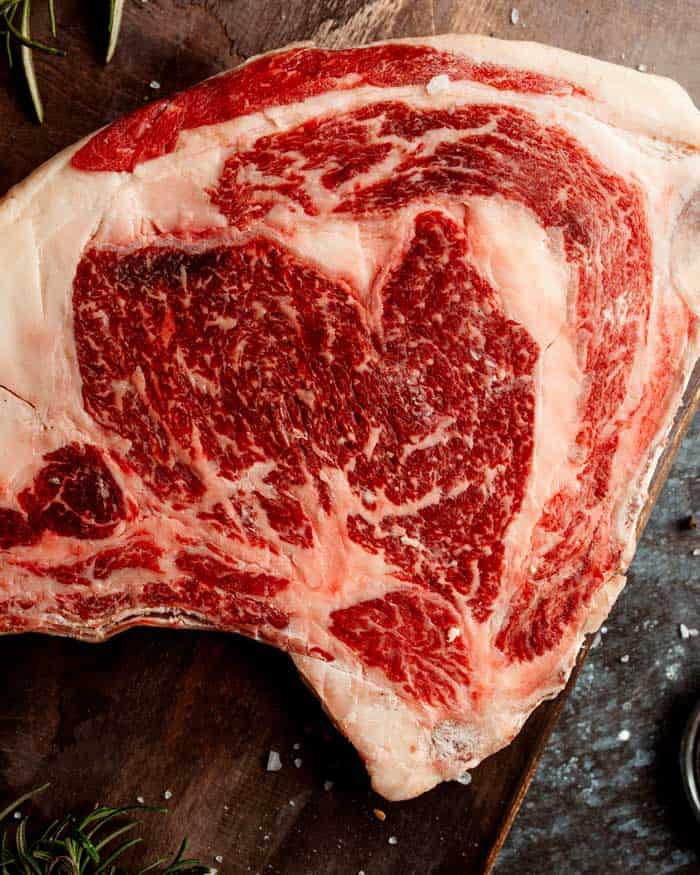
The marbling found in meat tends to melt away as it’s cooked, and this rendered fat can help to enrich the meat with more flavor as it cooks.
Flavor
The lower fat content in goat makes it a tougher meat to chew than sheep, but the flavor differences stretch far beyond just texture.
Goat is slightly sweeter than lamb in flavor, and can even carry a more gamey flavor. I tend to find that this usually depends on how it’s prepared. If you smoke it then this sweet flavor should lock into the meat, but if you grill it then it might lose some of that and become tougher.
About goat meat
Goat meat is a red meat that has a light marbling across its surface, and ranges in color between a very light pink to a deep bright red.
This marbling in the flesh makes it perfect for low and slow cooking and smoking. As it slowly cooks, the fat in the marble melts away and enriches the flesh of the meat with flavor and juice.
Most of this meat comes from young goats to help capture it at its most tender and juicy. This is what makes it great for barbecue smoking, and it carries a really delicate flavor.
If it comes from a goat that hasn’t been castrated then the meat tends to be tougher and more firm, and carries a more pronounced aroma and flavor.
About lamb meat
Lamb meat is a red meat that varies from a light pink color to a light red. The meat tends to come from sheep in their first year (hence ‘lamb’). If you see lamb meat that’s a deeper color then this is usually a sign that the animal was older.
Younger lamb is more tender, which makes it more sought-after. This means that it’s more expensive than older lamb. Beware of being ripped off if you’re sold darker meat!
How to cook goat meat
Goat meat doesn’t have a lot of fat or marbling, which means that if it’s cooked at high temperatures it’ll be prone to becoming tough.
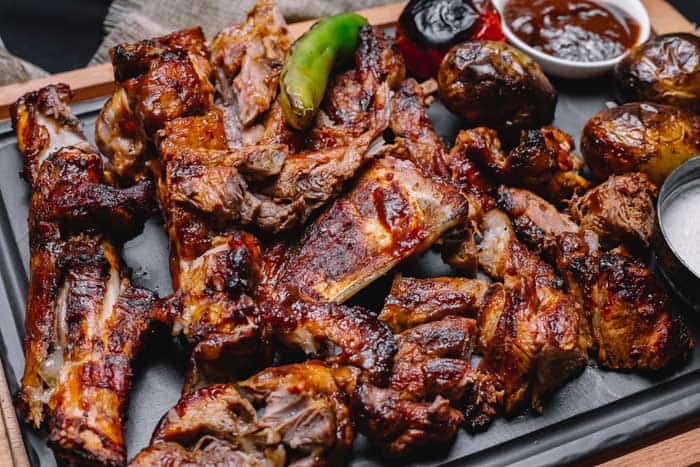
It’s far better suited to cooking low and slow. This will help retain its moisture while also allowing the collagen in the meat to render.
That’s why we often see goat served in curries or stews, as the slow cooking approach tends to bring out the best in the meat.
If you do want to grill it then I strongly suggest marinating or even brining it beforehand. This will help prevent it from drying out too quickly.
How to cook lamb
Lamb has more fat content than goat (source), so tends to hold up to grilling at higher temperatures than goat.
A word of warning though. The flavor of the fat in lamb does tend to be more gamey and deeper in taste. If this isn’t your kind of thing then I recommend trying to trim off some of the fat before cooking.
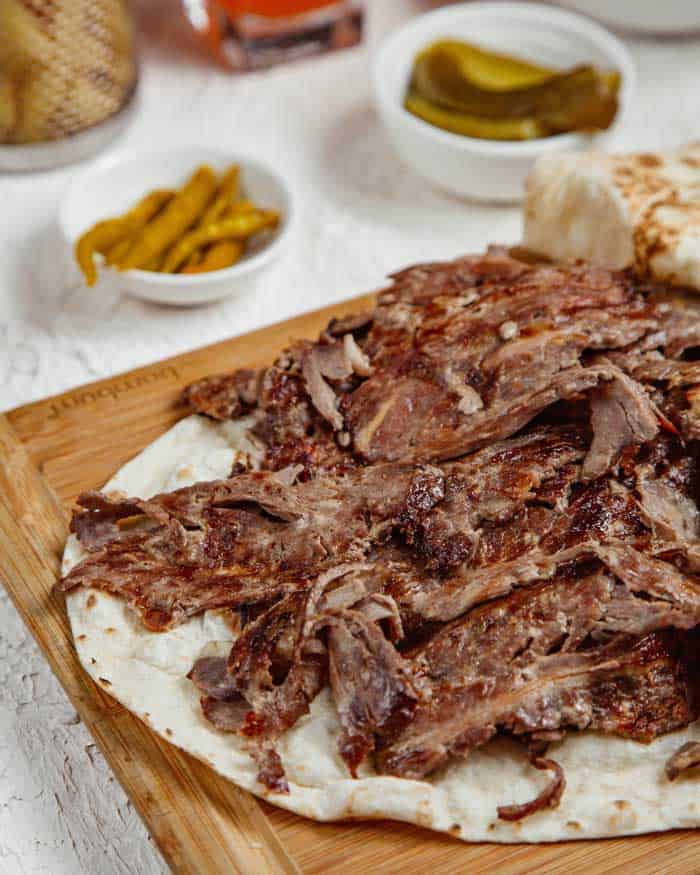
Lamb is fantastic barbecued or grilled, and also roasted.
Different cuts of lamb have different fat content, but if you manage to get a hold of a piece with a good deal or marbling then this will be perfect for slow cooking or roasting. For example, if you manage to get a fatty cut like lamb shoulder then try barbecue smoking it.
Lamb chops are expensive, but their fat content makes it worth it. They can be barbecue grilled or smoked, and are best finished with a seared skin and pink inside. See our smoked lamb chop recipe to see just how amazing they can be.
In contrast, leg of lamb is lean and contains far less fat. This makes them better for slow roasting or barbecuing. They’ll need marinating or brining beforehand.
Check out our grilled leg of lamb with herb butter recipe.
